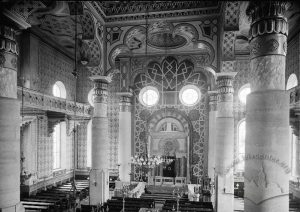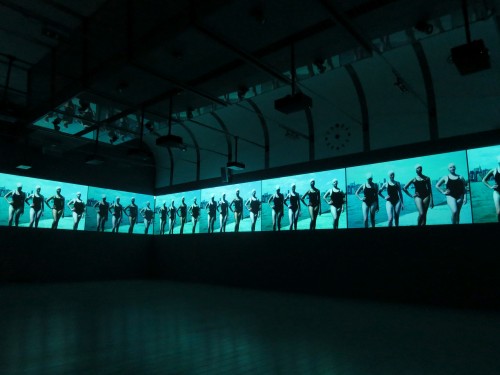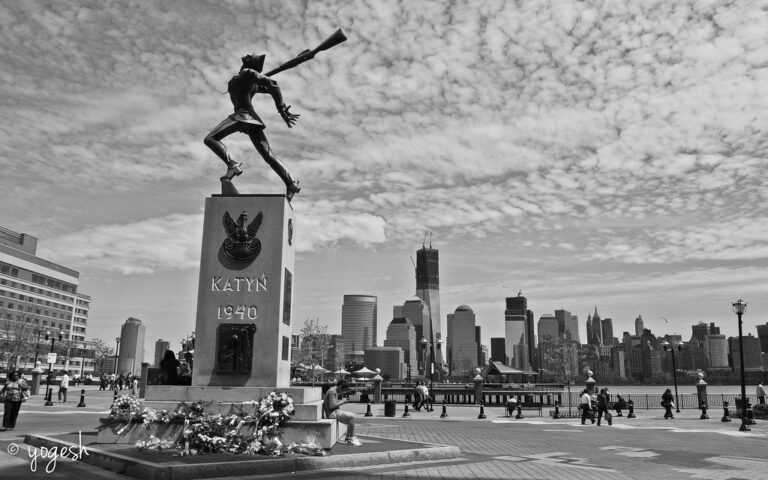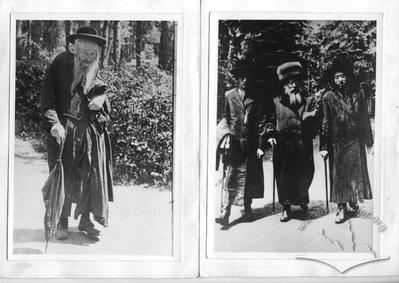2000s
Reflections

Verka Serdiuchka and Ukrainian National Identity at Eurovision 2007
This video is a recording of Verka Serdiuchka’s representation of Ukraine in the Eurovision Song Contest 2007 with the song “Dancing Lasha Tumbai.” Verka Serdiuchka is a drag persona performed by a male Ukrainian comedian, actor and singer Andriy Danylko. The character of Serdiuchka embodies a unique cultural archetype: a strong yet simple post-Soviet woman with Ukrainian rural origins. This is usually reflected in the lyrics, her costume designs and her use of “Surzhyk,” a mixed language combining Ukrainian and Russian elements. Danylko’s persona is often labelled as a "jester", both by nationalist-leaning audiences and in some academic circles (Yekelchyk 2010). Some others refer to it as "drinking songs" with heavy use of...
In the last decade, the Ukrainian parliament has issued two laws outlining the legal framework for dealing with the Russian imperial and Soviet past. These laws have sparked numerous scholarly debates on how to address the imperial past, Ukraine's status as part of the Romanov Empire and the Soviet Union, and what to do with the cultural products created over the centuries. This course aims to explore the Soviet legacy in present-day Ukraine and provide students with the necessary theoretical and methodological tools for studying, researching, and writing about Soviet history and culture. The implications for modern Ukrainian identity and politics, particularly in the context of the ongoing war with Russia, will be...
The course aims at a critical, in-depth exploration of how sexuality is intertwined with other epistemic categories and social differentials from a decolonial perspective and how the project of decolonization might look in the context of Ukraine. The course was created for Invisible University for Ukraine certificate program of the Central European University.
Russia’s war of aggression against Ukraine has prompted many to reconsider Ukraine’s relationship to the question of what it means to “decolonize.” This present-day revaluation of Ukraine’s complex imperial inheritances has centered primarily on Ukraine’s historical relationship to the Russian Empire (and the Russocentric Soviet Union), often to the exclusion of Ukraine’s Ottoman, Austro-Hungarian, and other imperial inheritances. This tragic moment of reflection raises a number of bedeviling questions. How do we narrate a decolonial history of Ukraine? Is it possible, or desirable, to disentangle Ukrainian culture from empires of the past and present? Can we imagine a future political and economic order for Ukraine that is not wholly dependent upon more powerful...
The course explores the history of Russia as an empire from Peter I up to now in the methodological perspective of the new imperial history. What are the historical preconditions and sources of Russian imperialism and militarism? How did the small principality of North-Eastern Europe manage to create the largest empire in the world? To what extent the Russian Empire of the 18th and 19th centuries differed from European colonial empires as well as eastern imperial polities such as Ottoman Empire and China? How did the imperial nationalities policies emerge and evolve? What role did the competition between "great powers" play in turning Russia into an empire? The course attempts to answer these...
The field of social history has achieved the edge of its popularity in 1950-1980s. It was strongly connected with other disciplines, such as economics, demography, sociology, and allowed historians to reach a much wider range of research themes. Since the 1960s, the social history of the Jewish people became important and influential part of the studies. Historians were exploring the possibilities to study Jewish community with new tools and integrating different representatives of Jewish community – workers, women, immigrants, criminals - in a research. Since 1990s historians of Jewish past shifted their interest to cultural studies. However, in the last years, we can see an economic turn, which signifies the search for a...
The aim of the course is to get to know how to analyze examples of visual culture, including: fiction films and documentaries, video, photography. Both contemporary and historical materials will be studied, together with theoretical texts and publications (from the area of film and media studies, anthropology, cultural studies and history. Although images are mostly seen, if you want to really know them and understand them really well, you must not only "see" them but also "read" them, that means to analyze them as a complex message/ text. That is why at our course we will firstly discuss some terms and categories, that would help us to read images such as: composition, convention,...
From Lviv to New York City, walking tours are a unique form of teaching and public history, transcending the everyday interactions of the classroom. On an urban walking tour, students go to the city but the city also comes to them, often in unexpected ways. This course will provide students with a focused analysis of the walking tour as a tool for higher education and for public history.
Ukraine’s twentieth century was tragically marked by much politically motivated violence and authoritarian regimes as well as movements, from the radical left and the radical right. These forces and events did not only do great harm in the past but left memories and legacies that are still challenging to contemporary Ukraine. In this class, we will focus on several key issues of history, memory, and politics. The readings cannot be exhaustive. Instead, our aim is to read and discuss a sample of important short texts that allow us to reflect more broadly on the underlying questions.
This course forms a part of Jewish History, Multiethnic Past, and Common Heritage: Urban Experience in Eastern Europe summer school.
The course will cover the major development of the East European Jewry from the mid-eighteenth century till the present. More specifically, it will focus on the apparently largest category of modern Jewish history, i.e. modernity itself. The course will start with the discussion of what modernity means in contemporary scholarly discourse, and—more specifically—how it is applied today in historiography of East European Jewry. This introduction will provide a frame for the focus of the course: the analysis of the changing life patters and differing strategies of adopting, rejecting, or negotiating modernity in every-day lives of East European Jews.





